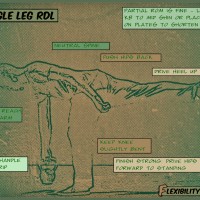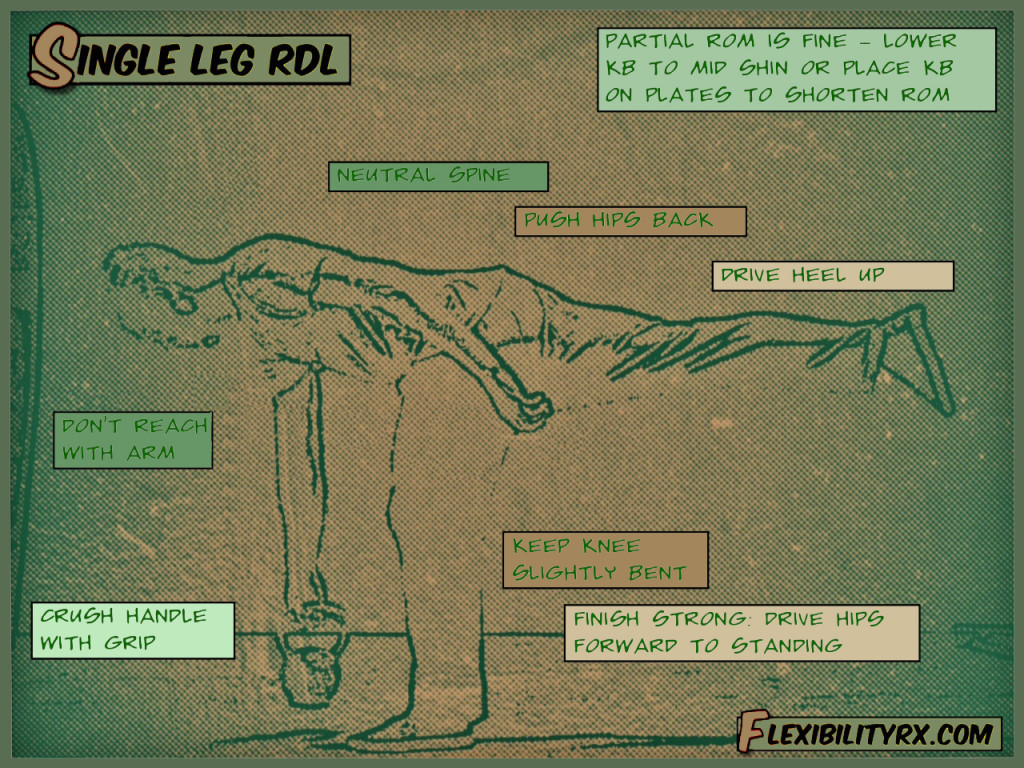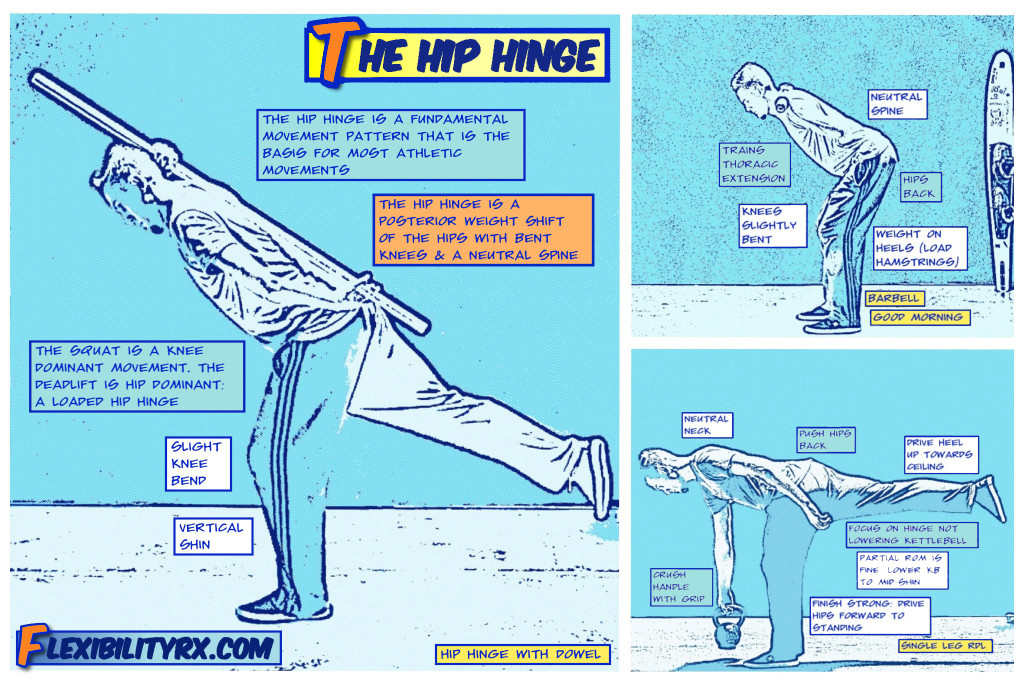
The Single-Leg RDL
The single leg RDL is a challenging single-leg exercise that teaches the hip hinge movement pattern. The deadlift is a loaded hinge hinge, which is built upon the ability to stabilize the spine, recruit the glutes and hamstrings, and differentiate hip flexion from lumbar flexion. The single-leg RDL is one of the best exercises you can do in the gym for better hip and core stability and movement competency that transfers over to many athletic movements.
“The eccentric loading of the hamstrings and glutes during the RDL is the same type of loading that occurs during the first phase of the pull of the snatch and the clean. RDL’s are a great accessory exercise for weightlifters to strengthen the top half of their pull.” – Mike Robertson
The Hip Hinge
The hip-hinge is a foundational movement pattern that is the basis for exercises like the deadlift, clean, and kettlebell swing. The hip hinge involves a posterior weight shift of the hips, with bent knees, and a neutral spine. The hip hinge is a different movement pattern than the squat – which is more of a knee dominant pattern. However, being able to hip hinge helps athletes understand how to shift their hips back and ground their weight through their heels during the descent phase of the squat.
Quad dominance, poor hip mobility, and poor core stability all make it hard to execute the hip dominant movement pattern. The hip hinge loads the ‘posterior chain’ – tensioning the glutes and hamstrings – and unloads the low-back. Athletes that do not know how to hip hinge will often substitute lumbar flexion for hip flexion. Greg Glassman calls this movement dysfunction Muted Hip-Function.
Athletes that struggle to hip hinge will often round their low-backs during squats and deadlifts increasing the potential for injury. The ability to hip hinge is a skill that is needed for exercises like the barbell good morning and single leg RDL. This skill is what prepares athletes for loaded weight training exercises – heavy squats and deadlifts.
Key Points to the Single Leg RDL
Neutral lumbar spine (don’t arch or round low-back)
Neutral thoracic spine (press chest forward)
Neutral cervical spine (keep neck in-line with spine)
Maintain slight knee bend (soft-knees)
Push the hips back (hinge at the hips)
Drive heel towards the ceiling
Lower torso with hips (don’t reach for KB)
Partial range of motion is fine
Kettlebell helps with balance
Crush handle with grip
“CRUSH the dumbbell with your grip. By doing so, you create a phenomenon called irradiation, which forces the rotator cuff to fire and essentially “packs” the shoulder nice and tight. This is important because you can’t think of this movement as actively lowering the DB with your arm – many trainees make the mistake of trying to touch the DB all the way to the floor, resulting in a significant amount of flexion, which I don’t agree with.” – Tony Gentilcore
– Kevin Kula, “The Flexibility Coach” – Creator of FlexibilityRx™ – www.FlexibilityRx.com
Related Resources
Syatt Fitness: Exercise Video of the Week: The Single-Leg RDL (link)
Tony Gentilcore: PERFECTING THE 1-LEGGED RDL (link)
Bret Contreras: The Single-Leg RDL (link)
Robertson Training Systems: How to RDL (link)
Tags: 1-legged deadlift, romanian deadlift, Single Leg RDL, single-leg training, unilateral leg exercises


Leave A Reply (No comments so far)
You must be logged in to post a comment.
No comments yet